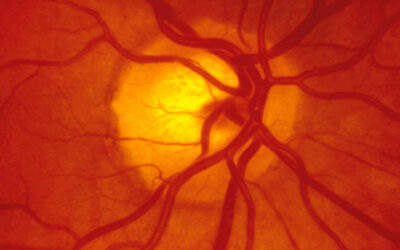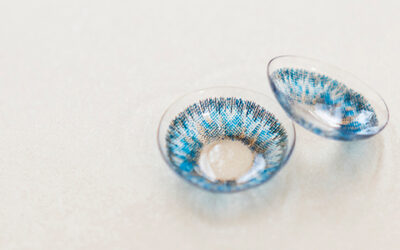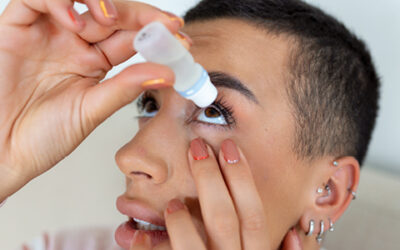Pterygium: Causes, Symptoms And Treatment
Have you noticed a small reddened and thickened tissue area extending out from the inside corner of your eye? It could be a fleshy growth called a pterygium, which translates to “wing of tissue.” Nicknamed “surfer’s eye” due to its increased prevalence in those that spend lots of time outdoors in the sunlight, a pterygium is a vascular, fleshy growth of mucous membrane on the eye that is a common cause of concern and unease with its appearance in many of our clients.
Here’s everything you need to know about the causes, symptoms and treatment of a pterygium.
What Causes A Pterygium?
While some aspects of pterygium are not completely understood in the research and evidence, prolonged exposure to excessive amounts of UV light from both the sun and artificial UV sources (like a tanning bed) is thought to be the number one risk factor.
This is another reason surfers and those that spend lots of time on the water, may be more at risk – as the water reflects the sun’s harmful UV rays.
Other risk factors identified include environmental factors, including dry climates, dust and wind. Regular exposure to smoke, chemicals and even pollen is also a risk factor – making those in certain occupations such as, working in chemical plants or with smoke-producing tools, at greater risk.
The chronic eye irritation and inflammation resulting from these environmental factors may trigger the growth of this abnormal conjunctival tissue.
Pterygium Symptoms
It should be noted that pterygium is benign (non-cancerous), though it may grow further across the eye and lead to vision disturbances. It tends to occur in adulthood and later years, with very few cases reported in childhood. Common symptoms include:
- Vascular, fleshy growth of tissue that starts in the inside corner of the eye, closest to the nose. Occasionally, in less than 1% of cases, it may come from the ‘ear’ side*.
- Typically pink/yellow in colour
- Extends to reach the cornea of the eye, which covers your iris and pupil
- Typically occurs in only one eye, though it may affect both eyes in a small percentage of cases.
- It may be entirely symptomless aside from the presence of the growth or may be accompanied by:
- Blurred vision
- Eye inflammation, irritation or redness
- A feeling like there is a foreign object in the eye, like sand or dust
- Eye dryness
- Eye strain or fatigue
Another condition is called a pinguecula, which presents very similarly to a pterygium. The key difference is that a pinguecula only covers the conjunctiva (the clear protective membrane over the eyes surface) and will not grow across the cornea that covers the iris and pupil.
How Is A Pterygium Treated?
Like most eye conditions, a pterygium can be mild and barely noticeable or severe to the point that it affects your vision or causes severe discomfort. In many cases, if your pterygium is mild and doesn’t affect you (aside from being cosmetically displeasing), we may recommend monitoring it while addressing the likely causative factors (we’ll discuss what this is likely to be for you) through tailored prevention techniques – please see below.
If your pterygium is causing you some eye irritation or discomfort, we may recommend:
- Using artificial tears or lubricating eye drops to help alleviate dryness and irritation
- Non-steroidal anti-inflammatory drops, which may be prescribed in certain circumstances to help with notable inflammation
- Eye protection to help prevent both UV and the effects of dry or dusty environments, which would otherwise exacerbate your symptoms
If your pterygium is more severe and starts affecting your vision or causing you pain or significant discomfort (or if the options mentioned above are failing to give you any relief from your irritation), then your eye care professional will discuss the option of surgery with you, as well as make a referral to an ophthalmologist if surgery may be something you want to proceed with.
Pterygium surgery (also known as “pterygium excision”) involves removing the abnormal tissue from the sclera (the white outer layer of the eyeball) and the cornea (the transparent part of the eye that covers the iris and pupil) and then grafting your own healthy conjunctiva tissue over the area to minimise the risk of the pterygium returning. Your eye may feel slightly scratchy after the procedure, and you’ll continue to use eye drops during your recovery (for up to a month) while avoiding notable UV exposure and eye strain, eye rubbing, and the like.
Pterygium Prevention
Reducing the risk of a pterygium developing is as simple as reducing your exposure to the elements and protecting your eyes as best possible:
- Anytime you’re going outdoors, through winter and summer, wear sunglasses that block 100% UVA and UVB rays. Wearing a wide-brim hat also helps. This is particularly important when you’re spending time on water or snow.
- If you’re at risk of exposure to irritants like smoke or chemicals, make sure you’re wearing safety goggles or wraparound glasses.
- If your eyes feel dry, use artificial tears or lubricating eye drops to help minimise irritation. These may also help if you work in dusty environments or spend much time in front of a screen.
- Avoid rubbing your eyes excessively.
- Maintain a healthy lifestyle, including a balanced diet to support your eye health best.
- Schedule regular eye exams to allow for early detection of changes in eye health and vision, including a pterygium in its early stages.
Concerned about a potential pterygium or other change in your eye? Book your appointment with our eye care professionals at our Queensland and New South Wales clinics by selecting your preferred location here.
Pterygium: Summary
- Vascular, fleshy growth of tissue in the corner of the eye that extends into the cornea
- Develops mostly due to excessive UV light exposure
- Most common in those who live in sunny areas or spend a lot of time outdoors, especially on water or snow
- Symptoms include dry eyes, burning, itching, and watery eyes – and in severe cases, vision disturbances
- Best managed through UV-protective eyewear, though further treatment via eye drops or even surgery may be required in more severe cases.
Important note: A pterygium may cease to progess when the environment changes, or it may continue either slowly or rapidly. Careful, regular examination and photo documentation is important. Removal is required before it reaches the pupil margin. If it grows into the pupil, scarring post surgery will affect vision permanently.





